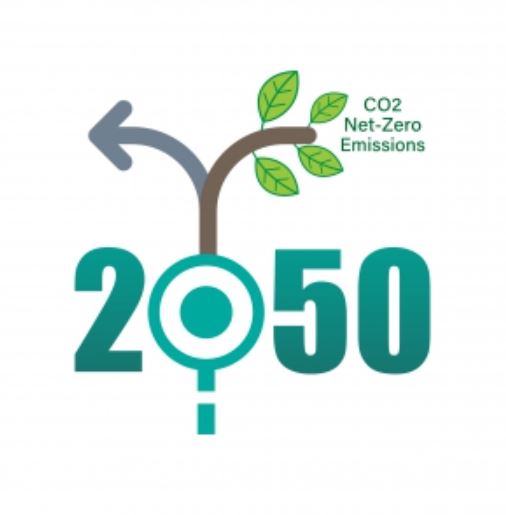Net Zero by 2050 – Limitations and the way forward

Context: While the renewables are making major inroads, the world’s overall primary energy use keeps rising.

Can the climate crisis be solved rapidly without any changes to lifestyle, society or the economy?
- Many climate activists, scientists, engineers and politicians are trying to reassure us the climate crisis can be solved rapidly without any changes to lifestyle, society or the economy.
- To make the vast scale of change palatable, advocates suggest all we have to do is switch fossil fuels for renewable power, electric vehicles and energy efficiency technologies, add seaweed to livestock feed to cut methane and embrace green hydrogen for heavy industries such as steel-making.
But, there’s just one problem: Time.
- We’re on a very tight timeline to halve emissions within eight years and hit net zero by 2050.
- While renewables are making major inroads, the world’s overall primary energy use keeps rising. That means renewables are chasing a retreating target.
- Some of the latest research shows that if the world’s energy consumption grows at the pre-COVID rate, technological change alone will not be enough to halve global CO₂ emissions by 2030.
- We will have to cut energy consumption by 50-75 per cent by 2050 while accelerating renewable building. And that means lifestyle change driven by social policies.
The limitations of technological change
- In the year 2000, fossil fuels supplied 80 per cent of the world’s total primary energy consumption. In 2019, they provided 81 per cent.
- Given the soaring growth rate of renewable electricity over that time period, this is possible because world energy consumption has been growing rapidly, apart from a temporary pause in 2020.
- So far, most of the growth has been supplied by fossil fuels, especially for transportation and non-electrical heating.
- The 135 per cent growth in renewable electricity over that time frame seems huge, but it started from a small base.
- That’s why it couldn’t catch fossil-fueled electricity’s smaller percentage increase from a large base.
- Technological change is at the point where we can now affordably deploy it to get to net zero. But the transition is not going to be fast enough on its own.
- If we don’t hit our climate goals, it’s likely our planet will cross a climate tipping point and begin an irreversible descent into more heatwaves, droughts, floods and sea-level rise.
- Converting essentially all transportation and heating to electricity while switching all electricity production to renewables is what we need for a liveable climate. But to complete this within three decades is not simple.
- Even at much higher rates of renewable growth, we will not be able to replace all fossil fuels by 2050.
- The only scenarios in which we succeed in replacing fossil fuels in time require something quite different.
- We can keep global warming under 2℃ if we slash global energy consumption by 50 per cent to 75 per cent by 2050 as well as greatly accelerating the transition to 100 per cent renewables.
Why is Individual behaviour change useful but insufficient?
- Individual behaviour change has some potential for mitigation, but it’s limited.
- The International Energy Agency recognizes net-zero by 2050 will require behavioural changes as well as technological changes.
- The 2022 Intergovernmental Panel on Climate Change report on climate mitigation has taken a step further, acknowledging the importance of collectively reducing energy consumption with a chapter on “Demand, services and social aspects of mitigation”.
- To do this effectively, government policies are needed.
- Rich people and rich countries are responsible for far and away from the most greenhouse gas emissions.
- It follows that we have to reduce consumption in high-income countries while improving human well-being.
Need of the hour
- The technologies in our climate change toolbox to tackle climate change: renewables, electrification, green hydrogen. But while these will help drive a rapid transition to clean energy, they are not designed to cut consumption.
Policies leading to large scale consumption changes:
The below policies would actually cut consumption, while also smoothing the social transition:
- A carbon tax and additional environmental taxes.
- Wealth and inheritance taxes.
- A shorter working week to share the workaround.
- A job guarantees a basic wage for all adults who want to work and who can’t find a job in the formal economy.
- Non-coercive policies to end population growth, especially in high-income countries.
- Boosting government spending on poverty reduction.
- Green infrastructure and public services as part of a shift to Universal Basic Services.
Practice Question for Mains
- The technologies in our climate change toolbox to tackle climate change will help drive a rapid transition to clean energy, they are not designed to cut consumption. Critically analyze. (250 Words, 15 Marks).
Referred Sources
If you like this post, please share your feedback in the comments section below so that we will upload more posts like this.

